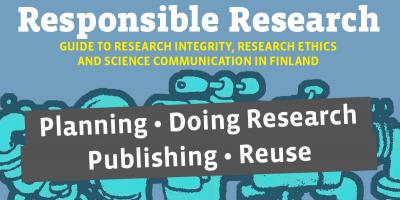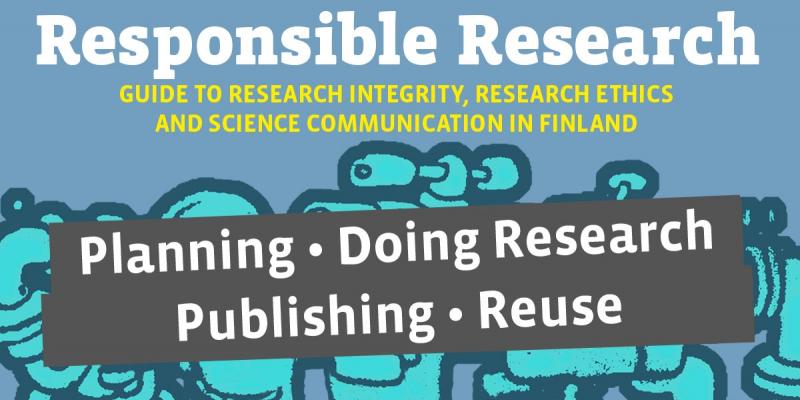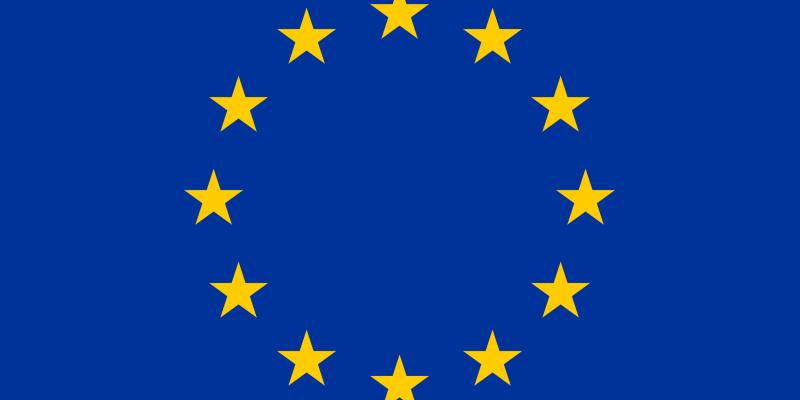Commonness of article-based dissertations means that universities need more competence related to publishing practices and copyright.
The article-based dissertation (also known as a compilation thesis, thesis as a collection of articles, thesis as a series of papers, thesis by published works or article thesis) is becoming more common while the proportion of monograph dissertations decreases. Of the dissertations reported by Finnish universities in 2017, 77 per cent were article-based, whereas three years earlier, they only accounted for 64 per cent. It has been suggested that this change is a result of the university funding model, the need to earn credits and development of the competence of the doctoral students.
Specific issues such as supervision, quality control, scheduling and authorship, among others, relate to the article-based dissertation. In addition, agreements signed with external publishers may limit the use of articles. The author quite commonly transfers their copyright to the publisher when they sign a publishing agreement. Once the agreement has been signed, the article becomes the property of the publisher, and the publisher will make the decisions concerning any further use of the article.
Agreements signed with external publishers may limit the use of articles.
All of the five largest international publishers allow the use of their articles in some format as a part of a doctoral dissertation as a general rule. In many cases, however, the final PDF version with the layout made by the publisher may not be used. Getting approval for the use of the last manuscript version, or the so called post-print or author’s accepted manuscript version, is usually easier. Online publishing is restricted to a larger extent than the use in a printed book, which is understandable. Some universities have resolved this issue by publishing online versions of dissertations that do not contain the actual publications, just a summarising report based on them.
The doctoral researcher may use e-mail, for example, to request a permission to use their article that has been published in a traditional subscription journal. Journals of major international publishers often have a link to the Copyright Clearance Center’s RightsLink for Permissions service. The agreement and permission texts may, however, be quite extensive, the terminology vary and the expressions used be ambiguous. The texts may not express clearly which version of the article may be used in the dissertation, or whether the permission also applies to the organisations' institutional repository which are generally used by universities for the storage of electronic theses and dissertations. In some forms of agreement, the author keeps the copyright in name, but the publisher still has the exclusive right to publish and distribute the article. In practice, the author’s possibilities to utilise their own article are just as limited as when they transfer all rights.
The doctoral researcher may ensure the possibility for further use of their article by selecting an Open Access journal (which may or may not charge for publishing) allowing the author to retain their rights. Buying the article as Open Access (hybrid OA) is another alternative. On the other hand, not all doctoral students have the opportunity to pay thousands of dollars of article processing charges (APCs) which are used for the funding of hybrid OA articles as well as some of the fully open journals.
The situation will be different if the Plan S principles promoted by European research funders become more common in the publishing industry and in research organisations. These principles include, among others, that authors shall retain copyright, that article processing charges are capped and that authors are compensated for the APCs.
Tips for doctoral researchers preparing a dissertation
Before publishing:
- Review the guidelines of your university and your faculty. They provide information about the required number of articles, for example.
- Discuss the authorship issues with the supervisor responsible for your dissertation. If the dissertation includes co-authored articles, the contribution of the doctoral student must be demonstrated. You should also agree with the other writers about the roles of the authors and the order of listing them, preferably in advance.
- Information concerning the usage of published articles is usually available on the websites of publishers and journals. Familiarise yourself with them already when selecting a publication channel for your articles. This helps you ensure that you do not choose a journal that does not allow using the article in a dissertation at all.
- Get the information from the original source. It is not enough that an article published in a specific journal has been previously published as a part of a dissertation. Publishers may change their practices.
- If possible, publish in an Open Access journal. You can search for OA journals in the Directory of Open Access Journals service or the JUFO portal, for example. The latter also includes impact indicators of journals.
- Finnish non-commercial scholarly publishers usually allow using the final versions of articles in a dissertation.
- If you wish to include a yet unpublished article in your dissertation, check what is the journal’s take on previously published papers.
- University libraries have online guides which provide additional information about open science as well as publishing and permissions.
After publishing:
- Store the original publishing agreement and any appendices. They usually contain sufficient information about the rights retained by the author.
- If you have transferred the rights to the paper to the publisher (and you haven’t kept the publishing agreement or it doesn’t contain the necessary information), you can obtain a licence afterwards through the RightsLink service, for example, or request permission by e-mail. Ensure that the permission also covers online publishing if your dissertation is to be stored in the university’s open institutional repository.
Anna-Sofia Ruth works as Information Specialist at Tampere University.
Further information:
Gadd, Elizabeth (2017). Guest Post — Academics and Copyright Ownership: Ignorant, Confused or Misled? The Scholarly Kitchen 31.10.2017 https://scholarlykitchen.sspnet.org/2017/10/31/guest-post-academics-copyright-ownership-ignorant-confused-misled/
Ilva, Jyrki (2018). Plan S – pikavauhtia kohti tieteellisten julkaisujen avoimuutta. Tietolinja 2/2018. http://urn.fi/URN:NBN:fi-fe2018092336399
Kopiosto (2019). Tekijänoikeuden ABC. https://www.kopiosto.fi/kopiosto/tekijanoikeustietoa/tekijanoikeuden-abc/
Linna, Anna-Kaarina (2015). Artikkelina julkaistava opinnäyte haastaa opinnäytteiden sähköisen julkaisujärjestelmän. Signum 4/2015. https://journal.fi/signum/article/view/53353
Mason, Shannon (2018). Publications in the doctoral thesis: challenges for doctoral candidates, supervisors, examiners and administrators. Higher Education Research & Development 37(6), 1231-1244. https://doi.org/10.1080/07294360.2018.1462307
Science Europe AISBL (2019). 10 Principles. https://www.coalition-s.org/10-principles/
Research ethics aspects for the dissertation supervision and review process: Recommendations of the Finnish National Board on Research Integrity and Universities Finland UNIFI to universities http://www.tenk.fi/sites/tenk.fi/files/TENK_UNIFI_ohjeistus_vaitoskirjaprosessi.pdf
Valo, Maarit (2013). Monografia vai artikkeliväitöskirja? Yliopistopedagogiikka 20(1). https://lehti.yliopistopedagogiikka.fi/2013/04/08/monografia-vai-artikkelivaitoskirja/
Valo, Maarit & Pörhölä, Maili (2010). Tohtoriopiskelija julkaisufoorumeilla: kokemuksia puheviestinnän väitöskirjaa tekevien artikkelipajasta. Peda-forum – yliopistopedagoginen aikakausjulkaisu, 17 (2), 37–40. Reprint versions available at: http://urn.fi/URN:NBN:fi:jyu-2011110311624
Vipunen – Education Statistics Finland https://vipunen.fi
You might also be interested in
Tämä teos on lisensoitu Creative Commons Nimeä 4.0 Kansainvälinen -lisenssillä. Detta verk är licensierat under en Creative Commons Erkännande 4.0 Licens. This work is licensed under a Creative Commons Attribution 4.0 International license.


